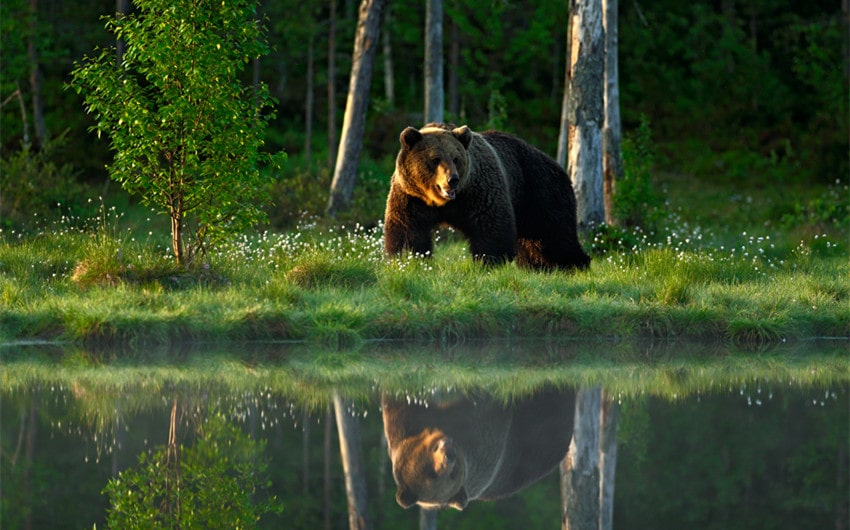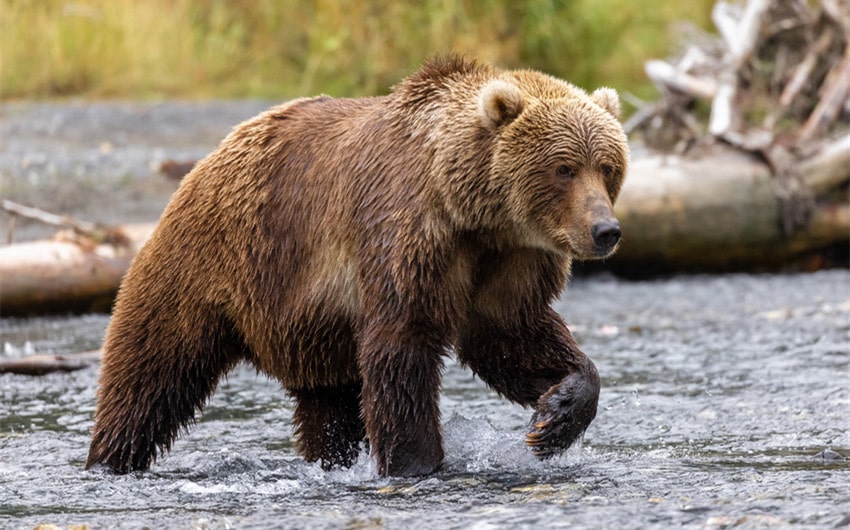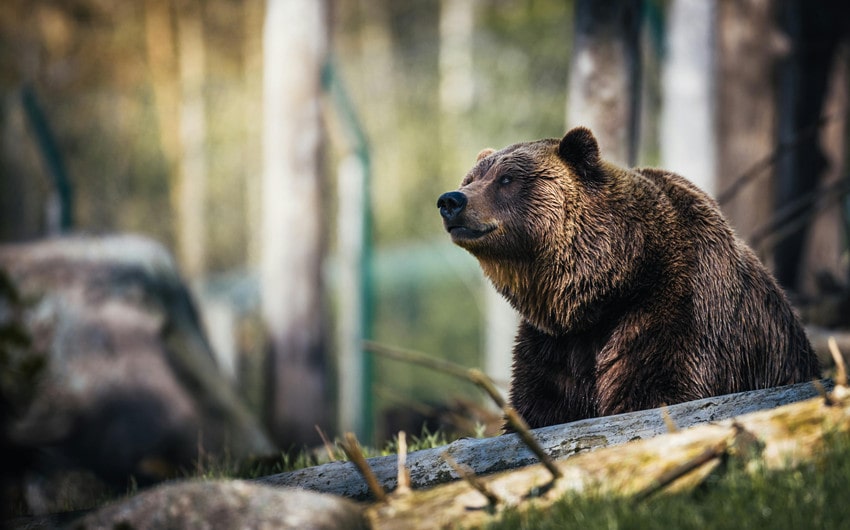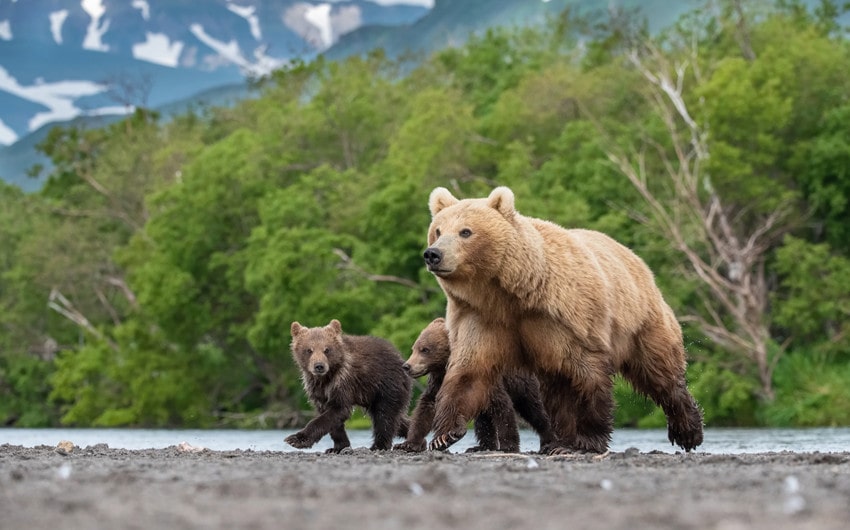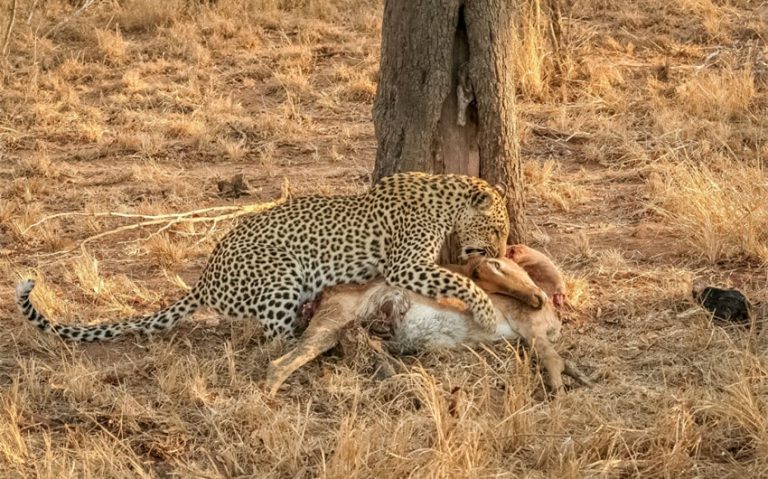Explore 4 Biggest Bear Species and Their Unique Adaptations
Bears are some of the most impressive creatures in the animal kingdom, with their raw power and majestic presence. Among them, there are a few that stand out for their sheer size, commanding attention wherever they roam.
When it comes to the biggest bear species, these giants are not just fascinating for their physical attributes but also for the unique adaptations that help them survive in challenging environments. In this article, we’ll take a closer look at the largest bear species on Earth and explore what makes them so massive in size and strength.
Biggest Bear Species
When it comes to size, bears are among the largest terrestrial mammals, and certain species have evolved to reach truly impressive proportions. Let’s take a closer look at the four biggest bear species, each of which stands out for its size, strength, and unique adaptations to their environments.
1. Polar Bear (Ursus maritimus)
The polar bear holds the title of the largest bear species, and arguably, one of the largest land carnivores. Male polar bears typically weigh between 900 to 1,500 pounds, with some exceptional individuals exceeding even this weight range.
Standing up to 10 feet tall on their hind legs, they have an impressive frame, with large paws designed to distribute their weight on the ice and help them swim. Polar bears are native to the Arctic and rely on sea ice to hunt for seals, which make up the majority of their diet.
Their thick layer of fat and dense fur helps them survive in freezing temperatures, while their size allows them to cover vast expanses of icy terrain in search of food.
2. Kodiak Bear (Ursus arctos middendorffi)
The Kodiak bear is often considered a close contender to the polar bear in terms of size, and some individuals even rival or surpass polar bears in weight. Kodiak males can reach weights of up to 1,500 pounds, although the average is around 800 to 1,200 pounds.
This subspecies of brown bear is found on Kodiak Island in Alaska, where it thrives in the nutrient-rich environment. Kodiak bears are omnivorous, with diets consisting of salmon, berries, roots, and small mammals.
Their size is a product of abundant food sources and a favorable climate that allows them to grow larger than many of their brown bear relatives.
3. Grizzly Bear (Ursus arctos horribilis)
Grizzly bears, one of the most iconic bear species in North America, are also among the largest. Adult male grizzlies typically weigh between 600 to 1,000 pounds, with some exceptional individuals reaching up to 1,200 pounds.
While they are smaller than their Kodiak and polar cousins, grizzlies are still formidable animals. Found across the western United States, Canada, and Alaska, grizzly bears are known for their strength and adaptability.
Their diet is omnivorous, consisting of fish, plants, and small to medium-sized mammals. They play a key role in their ecosystems, helping to regulate populations of other species.
4. Siberian Brown Bear (Ursus arctos beringianus)
The Siberian brown bear, a subspecies of the brown bear, is considered one of the largest bears found in Asia. Males typically weigh between 600 to 1,000 pounds, with some individuals reaching over 1,200 pounds.
These bears are primarily found in the dense forests of Siberia, Russia, where they prey on a variety of animals, including moose, reindeer, and smaller mammals, as well as scavenging from carrion.
Like other brown bears, Siberian brown bears are omnivorous and consume a wide variety of foods depending on the season, including berries, roots, and fish. Their size is advantageous in their harsh, cold environment, helping them store fat for long winters.
Other Notable Large Bears
While the polar bear, Kodiak bear, grizzly bear, and Siberian brown bear are the largest, there are other notable large bear species worth mentioning:
- Andean Bear (Tremarctos ornatus): Also known as the spectacled bear, it is the largest bear in South America. Though not as large as the species listed above, male Andean bears can still weigh around 400 to 500 pounds.
- European Brown Bear (Ursus arctos arctos): Found across Europe and parts of Russia, the European brown bear is smaller than the Kodiak or Siberian brown bear but can still weigh up to 800 pounds in some regions.
These species, while not as large as their Arctic or Alaskan relatives, still represent the incredible strength and adaptability of bears across different environments.
Why Are These Bears So Big?
The massive size of the biggest bear species is not just a random genetic trait—it’s the result of millions of years of evolution and adaptation to their environments. Let’s dive into the factors that contribute to the incredible size of bears like the polar bear, Kodiak bear, and grizzly bear.
1. Evolutionary Advantage
One of the main reasons these bears have evolved to become so large is the survival advantage their size provides. In the wild, larger animals often have better chances of surviving because they are more capable of competing for food, defending territories, and protecting themselves from predators or rivals. In particular, larger body mass helps bears maintain energy stores during periods of food scarcity, such as the winter months for many species.
For polar bears, their immense size helps them dominate the Arctic environment, where prey is spread out and hard to find. The larger the bear, the more energy it can store in the form of fat, which is critical for surviving the long, cold winters when food is scarce.
Similarly, Kodiak and grizzly bears, which also experience seasonal shifts in food availability, benefit from their size as it allows them to store large amounts of fat to see them through the leaner months.
2. Adaptation to Cold Climates
For certain bear species, like the polar bear and Siberian brown bear, their large size is a direct adaptation to the cold climates they inhabit. Larger animals have a higher volume relative to their surface area, meaning they lose less heat compared to smaller animals.
This is known as Bergmann’s Rule, which suggests that animals living in colder climates tend to have larger body sizes than those in warmer areas. The larger size helps these bears conserve heat, keeping them warm in freezing temperatures.
Polar bears, for example, have a thick layer of fat (up to 4.5 inches) and dense fur to insulate their bodies, but their large size further aids in heat retention. The extra bulk helps them retain body heat and stay warm even when the Arctic temperatures plummet. Similarly, the Siberian brown bear’s size allows it to endure the harsh winters in Siberia, where temperatures regularly dip below freezing.
3. Access to High-Calorie Diets
Another critical factor in the size of these bears is their diet. Bears are opportunistic omnivores or carnivores, depending on their species, and many of the largest bear species have access to high-calorie food sources that fuel their growth. Polar bears primarily hunt seals, which provide a rich source of calories in the form of fat. Seals are high in fat, which is essential for the polar bear’s survival in the icy Arctic environment.
Kodiak and grizzly bears, on the other hand, have access to a variety of food sources, including fish (such as salmon), berries, and small to medium-sized mammals. The abundance of food in certain areas, especially in regions like Alaska or the coastal forests, allows these bears to grow to larger sizes. Their ability to catch large prey, like salmon during spawning seasons, provides the high-fat diet they need to reach massive proportions.
The nutrient-rich environments where these species live contribute to the energy they need to build large bodies. For example, Kodiak Island, where the Kodiak bear lives, has a rich ecosystem full of protein and fat sources, allowing bears to thrive and grow large. Similarly, grizzly bears in the Pacific Northwest benefit from a plentiful supply of salmon, which allows them to grow larger and store more fat.
4. Territorial Dominance and Social Behavior
Larger bears also have an advantage when it comes to territorial disputes. The bigger the bear, the better equipped it is to fight off rivals, whether they are other bears or predators. In species like the Kodiak bear and grizzly bear, males are significantly larger than females, a phenomenon known as sexual dimorphism, which helps males establish dominance and secure mating rights.
Larger size also plays a role in their ability to protect their food sources. Grizzly and Kodiak bears, for example, are known to defend their territory aggressively, especially when food is abundant, such as during salmon runs. A larger bear can intimidate competitors and assert its dominance, allowing it to secure access to critical resources.
5. Genetic Factors and Population Isolation
Genetic factors also play a significant role in the size of these bears. For example, the Kodiak bear has developed a larger size through a combination of evolutionary pressures and genetic isolation on Kodiak Island.
Over time, this population of brown bears has adapted to the specific conditions of the island, which includes access to abundant food sources and a lack of significant competitors, allowing them to grow larger than their mainland relatives.
Similarly, polar bears have evolved to thrive in the Arctic environment, where food availability is limited. Their genetic adaptations over thousands of years have allowed them to develop the traits necessary to survive in such a harsh environment, including their large size, which is a key factor in their survival.

